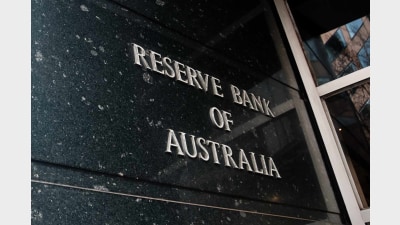Transformational ownership is the only way to keep the lights on


We have entered a period of protracted instability in energy markets unseen in recorded history. Past inaction on serious risks in Australia’s energy markets is now a realised threat to commercial and industrial entities, retailers and households.
As wholesale electricity prices surge to persistent highs, rocketing gas prices have already delivered three casualties; LPE from Queensland, Pooled Energy, which was backed by the Australian Renewable Energy Agency, and NSW’s Weston Energy (a wholesale distributer).
A wide range of trade-exposed businesses are at risk when energy prices flip from advantage to handicap – or as appears to be true of gas, when industrial contracts are out of reach.
There is now very real risk to any employment in Australia based on our energy competitiveness. Consider as an example, Australian aluminium smelters dotting townships around the country, employing more than 15,000 people from supporting 60,000 families. With the removal of their competitive energy component, where is there advantage now? They do not have advantage in capital costs or labour costs.
Constrained gas supply and elevated prices threaten a wide range of other businesses, from paper manufacturers to smallgoods and feedstock users such as explosives. In short, a seriously disrupted energy market is deeply troubling.
It is from this unsure footing that Australia must put meaningful structure to the energy transition of our economy, and fast.
Obviously, this is a complex consensus-dependent project. There’s a role for policymakers and a role for individual actors but we could argue that those parts are well known, even if the policy essential is largely inert. It’s the institutional investors and the previously maligned energy providers who will need to find common purpose and deliver the lead lines at this time.
Globally, and in Australia, much has been invested in agreeing targets for 2050 – or 2060 in China’s case. Locally – and in many other countries – not much has been committed to the immediate future of energy. Australia, and much of the OECD, is facing a crunch, now.
As Australia’s primary energy markets have evolved in recent years, the most concerning characteristic has been the evident awareness of key stakeholders that risk is mounting – met with a clear belief that this was someone else’s problem to solve.
The energy transition is not just about replacing what we have today. There are two prospective additions that will likely boost electricity use sharply. Firstly, gas users are being encouraged to switch to electricity. AEMO has warned that gas will be in short supply, a reality now abundantly clear but one which will get worse. Secondly, there is an impending change in the market for private transport. Every global vehicle manufacturer is focused on providing electric vehicles, and we will see at least 350 new models coming into the market in the next two years – at a time when petrol is over $2 a litre.
Given that natural gas provides about 30% of Australia’s primary energy, its transition to electricity and the rise of EVs implies a long climb in electricity demand that may reach three times’ current levels. To meet the implied substitution for 2050, net zero ambitions electricity production may have to be something like eight times’ today’s output.
Beyond transition there is opportunity. Despite our isolation, Australia is presumed to have a powerhouse future based on the production of cheap renewable energy for industry. Yet we are addressing this massive challenge at the scale of suburban property developers.
Clearly, there is opportunity for investors, but they require investable operators to deliver. Right now, the capability in Australia is in companies handicapped for growth by ESG perceptions. Logically, investors may anticipate the entry of new, perhaps foreign ESG-friendly operators with utility scale. Yet a look across the likely jurisdictions reveals that our problems are common and so is the condition of our utilities. It may be that the capable options in Australia able to scale effectively are the incumbent utility companies.
Policy, anaemic as it has been, imagined a field of dreams where the market would foster competitive energy pricing and assured security of supply. Any informed Texan right now will have a firm view on the flaws in that assumption. Their theoretical efficiency, and deliberate isolation from neighbouring grids, ran up hard against the realised risk of unusual weather – and over 200 people died.
Australian superannuation funds are positioned to take the role of financiers of the transition. They have the design capability to manage capital towards balanced economic and social outcomes. Until now, the investment community has handicapped incumbent utility companies by constraining capital – a fair strategy for a sector increasingly unattractive to those seeking long term value. But this has left ageing infrastructure, instability and a lack of innovation in its wake.
For a more detailed description of the current state, one need look no further than the recent AGL scheme booklet where a de-merger strategy was adopted as they only way to free the retail arm from ageing, unpopular power generating assets.
Investors said no, that’s not the way. But this should not be the end of the conversation. Investors have a critical role in sustaining the sort of transition they seek in the energy markets. Unlike, say, digital disruption, energy markets are shaped by complex combinations of engineering, physics and social demands. Put simply, when utility assets retire there is no sign that a utility scale replacement will be ready to take its place.
Looking ahead, the scale of what is required is itself ample evidence of the need for action. And co-ordination. It is only through the scale of infrastructure, certainty of policy arrangements and the application of long-term, ambitious capital that we can deliver low-cost renewable energy, a pre-requisite for economic stability and the potential growth we hope for in new industry.
In this country, the path to net zero looks more like a nightmarish hedge maze than a reliable marine chart. We need a different approach to find our way and every stakeholder needs to take some ownership. Now is not the time to stand on the sidelines, now is the time to finance, to innovate, to accelerate. This is a time for transformational owners.
Michael Gill is executive counsellor at Dragoman.
Recommended for you
High risk, high return assets will become dangerous options for superannuation funds under the Federal Government’s planned $3 million superannuation changes, writes Brad Twentyman.
Economic policy can no longer ignore the macroeconomic impacts of Australia's superannuation system and the emerging policy implications, writes Tim Toohey.
In an age where climate concerns and social consciousness dominate headlines, it’s no surprise that investors are increasingly seeking investments that align with their values, writes Simon O’Connor.
How profit-for-member superannuation funds can embed 'commerciality with a heart' and marry a member-first culture with commercial outcomes.














Add new comment